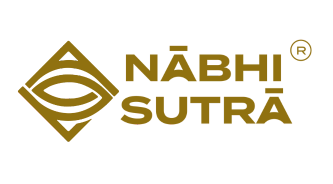Step by step facial process using Shata Dhauta Ghrita and Marma wa
Marma massaging wand:
It is made up of Neem wood which makes it beneficial for skin as it having anti-bacterial properties. This wand is having two sides one broad and one narrow side. I have explained below how to do marma massage using Shata Dhauta Ghrita Skin repair emollient and Marma point massage wand. The regions where fingers are to be used narrow side of the wand can be used and to the areas where thumb is used to apply the pressure their broader side of the wand can be used.
Steps before starting marma massage of the face:
- Hold the oil to be used for massage in the palm as the body temperature makes it warm adequately.
- Rub it vigorously between the palms as it will help in warming the oil.
- Gently keep the palm over the face for 15- 20 seconds; this will improve the blood circulation of the face.
- Move the hands little by little towards the ears then, start gently massaging the ear pinna and close the ears.
- Gently massage on the neck by gently pressing on the carotid arteries alternatively. This will improve the blood circulation towards the head (left and right hemisphere).
- Gently squeeze both the ear then, massage on the ear lobes and later tip of the ear pinnas.
- Gently massage the Sthapani marma - third eye area (one angula above the point of intersection of both the eyebrows) using thumbs of both the hands.
- Massage the shoulder on Skandha marma (midpoint of the trapezius muscles) on both the sides.
Marma massage
- Press gently on Murdhani marma or Adhipati marma (located four angulas from the hairline). Then, slowly apply pressure on Bramharandhra marma (located two angulas before Adhipati marma).
- Apply pressure simultaneously on Sthapani and Murdhani marma using both the hands.
- Gently apply pressure on the area of Jatru marma (located above the manubrium sterni) simultaneously applying pressure from Staphani marma to Bramharandhra marma.
- Apply pressure on Hanu marma (located in a groove between the chin and the lower lip) with the index fingers and move along the border of mandible till Shankha marma (located on the temple region on either side of the head).
- Gently massage Shankha marma in circular motion on both the sides.
- Apply pressure on Ostha marma (1/3rd distance from the nose and the upper lip) then, Chibuka marma (half angula laterally to the angle of mouth on both sides) to Kapola marma (a depressed area formed after tightly closing the teeth) to Shankha marma.
- Start applying pressure on Kapola Nasa marma (present laterally to each side of the nostrils) to the Shankha marma.
- Apply pressure on Ganda marma (present on the either side of the nose) to Shankha marma.
- Again, start applying pressure from the tip of the nose to Kaninaka marma (just above the inner canthus of the eyes) to the eyebrows to the Apanga marma (outer canthus of the eyes). Then, close the ear with both the hands and gently lift the head upside.
- Put both the thumbs in the under-eye area and start moving the head to and fro.
- Massage with the thumb to Sthapani marma then to the upper eyebrows then to the Shankha marma.
- Massage gently using thumb to Kapal marma (or start of the hairline which is four angula from the Sthapani marma) to Shankha marma.
- Now, apply pressure using Thumb inch by inch from Kapala marma to Bramha randhra marma to Murdhani marma to Shivarandhra marma.
- Now gently massage or rub in downward directions.
- Put one hand on Kanthanadi marma (area of Suprasternal notch) and one on the Sthapani marma.
- Cover the eyes once again with the palms before opening and gently massage on the back and the neck.
Keywords:
Marma points, face, marma massage, marma massage wand.
References:
Sushruta Samhita
Vd. Vasant Lad, Anisha Durve (2008,2015), Marma points of Ayurveda (The Ayurvedic Press).

Dr. Shivani Pandey is a Senior Research Fellow at CCRAS (Central Council for Research in Ayurvedic Sciences) and an Associate Ayurvedic Doctor at Nabhi Sutra, where she specializes in skincare and haircare product research and development. With a rich background in Ayurvedic consultation and deep expertise in holistic health, Dr. Pandey integrates traditional wisdom with modern research to promote well-being through natural solutions.


